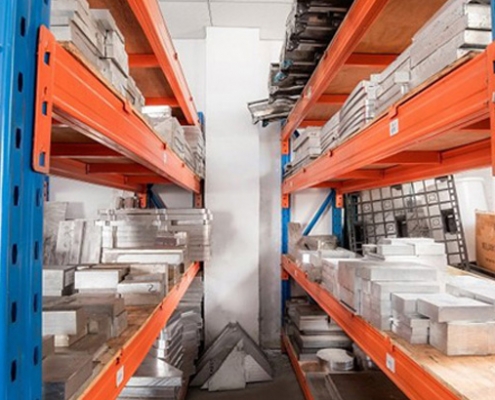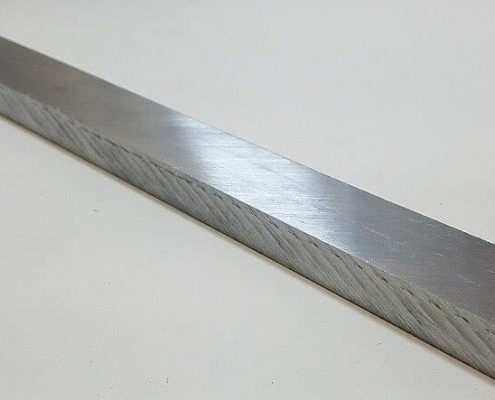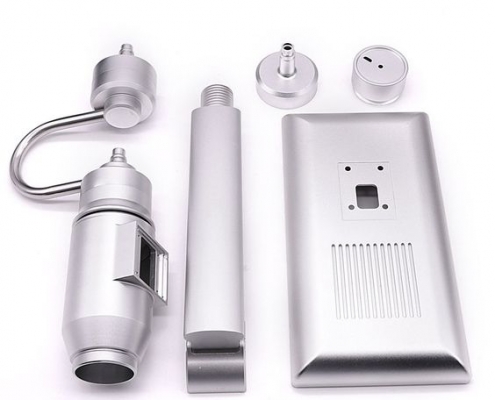Steel vs Aluminum: A Comprehensive Guide
Choosing the right metal for your CNC machining project isn’t easy. If you choose wrong, it could lead to higher costs, unnecessary weight, or even product failure. With this guide, you’ll clearly understand the differences between steel and aluminum, helping you make smarter manufacturing decisions.
When comparing steel vs aluminum, focus on what really matters: strength, weight, corrosion resistance, machinability, and cost. Each has its own strengths, and this article explains them clearly so you can confidently choose the best metal for your needs.
Let’s start with the key factors you should consider when choosing between steel and aluminum in CNC applications.
Steel vs Aluminum: Which Metal is Right for Your Project?
Understanding the differences between steel and aluminum is essential for making the right decision in any CNC machining project. One of the most important factors to consider is weight, especially when performance, handling, and transport costs are involved.

Weight
One of the most noticeable differences between steel and aluminum is their weight. In terms of density, aluminum is much lighter than steel. The density of aluminum is around 2.7 g/cm³, while steel is about 7.85 g/cm³. That means aluminum weighs roughly one-third of steel for the same volume. This difference is critical in industries like automotive and aerospace, where reducing weight means better fuel efficiency and improved performance. It also plays a role in CNC prototyping and rapid CNC machining, where lightweight models are easier to test and modify. Additionally, lighter parts simplify assembly and reduce shipping costs, making aluminum a popular choice for CNC machined components used in transport and consumer products.
Strength
Steel is stronger than aluminum in general. It has a higher tensile strength and can withstand more stress before deforming. This makes it the preferred choice in structural applications like bridges, frames, or heavy-duty equipment. However, when you consider the strength-to-weight ratio, aluminum performs quite well. For many CNC milling tasks, especially where reducing weight is important, aluminum provides a solid balance of strength and lightness.
Malleability
Aluminum is more malleable than steel, which means it can be formed into complex shapes without cracking. This makes it easier to machine into tight tolerances and intricate geometries. It’s ideal for CNC prototyping, especially when creating detailed parts with fine features. Steel, while less malleable, is still workable but usually requires more effort and higher power tools during CNC machining operations.
Thermal Conductivity
Aluminum has much better thermal conductivity than steel. It transfers heat quickly, making it ideal for applications like heat sinks, engine components, and LED housings. Steel retains heat longer, which might be useful in some situations but can lead to problems like overheating or expansion in precision machining processes. Here’s a quick comparison:
| Property | Aluminum | Steel |
|---|---|---|
| Density (g/cm³) | 2.7 | 7.85 |
| Tensile Strength (MPa) | 90–400 (varies by grade) | 370–1800 (varies by grade) |
| Thermal Conductivity | ~205 W/m·K | ~50 W/m·K |
| Corrosion Resistance | High | Medium to Low |
| Machinability | Excellent | Good |
| Cost | Higher (raw) | Lower (raw) |
Corrosion Resistance
Aluminum naturally forms a protective oxide layer that resists corrosion, which makes it suitable for outdoor or marine environments without much treatment. Steel, on the other hand, is prone to rusting unless it is stainless steel or coated. For CNC machined parts used in exposed conditions, aluminum might last longer with less maintenance.

Cost
Steel is usually cheaper than aluminum in terms of raw material cost. However, aluminum may reduce overall costs when you consider its ease of machining and lower weight. For example, aluminum CNC parts often take less time to produce because of faster cutting speeds, reducing labor and energy costs. Maintenance costs can also be lower since aluminum resists rust.
Applications for Aluminum and Steel
Choosing between aluminum and steel often depends on where and how the metal will be used. Each material has unique properties that make it suitable for different industries and CNC machining applications. The following explains the best applications for each metal:
Applications for Aluminum
Aluminum is commonly used in industries where weight savings, corrosion resistance, and thermal conductivity matter. Its non-rusting nature and ease of machining make it a favorite for both structural and aesthetic parts. It’s especially useful when parts need to be light but still strong enough for everyday use. Examples include:
-
Aerospace components such as fuselage panels and brackets, where light weight improves fuel efficiency.
-
Automotive engine parts, wheels, and transmission housings.
-
Consumer electronics like laptop shells and phone casings, where aluminum provides both strength and a sleek appearance.

-
LED enclosures for heat dissipation.
-
Bicycle frames where riders benefit from a strong yet lightweight build.
Applications for Steel
Steel is the go-to material for applications where strength, impact resistance, and durability are the top priorities. It performs well under pressure and is often used in CNC turned parts that need to withstand high loads. Common uses for steel include:
-
Construction beams and columns that hold up large buildings.
-
Automotive chassis and body frames for safety and structural integrity.
-
Industrial machinery parts that are exposed to heavy wear and stress.
-
Railway components such as tracks, axles, and couplers.
-
CNC machined parts for heavy-duty equipment like excavators and presses.
Some manufacturers also choose specific shapes like aluminum flat bar or aluminum square bar when framing lightweight structures, such as display racks or window frames. In contrast, decisions around alloy steel vs carbon steel are based on needs like weldability, hardness, or resistance to wear. Alloy steel is better for parts that require added toughness and strength, while carbon steel is often chosen for basic structural components where cost and easy welding are key.
Summary: Applications for Aluminum and Steel
| Material | Key Features | Common Applications |
|---|---|---|
| Aluminum | Lightweight, corrosion-resistant, easy to machine | Aerospace parts, electronics, bicycle frames, LED housings |
| Steel | High strength, durable, wear-resistant | Construction beams, machinery parts, vehicle frames, rail parts |
Start Your CNC Steel or Aluminum Project with VMT
Whether you need lightweight aluminum parts or high-strength steel components, VMT provides expert CNC milling and CNC turning services to meet your exact requirements. We work with a wide range of steel bar stock and aluminum extrusions, delivering custom, high-precision parts tailored to your application.
We operate with 100 imported machines and two dedicated proofing teams. We are capable of completing sample production within 3 days and ensuring delivery within 7 days. Our use of advanced equipment, experienced professionals, and streamlined production processes allows us to provide customers with reliable, high-quality, and efficient CNC machining services.
From small batch prototypes to large scale production, VMT is committed to helping you bring your project to life accurately, on time, and to your satisfaction.

In Conclusion
Both steel and aluminum have their own benefits. Steel is stronger and cheaper; aluminum is lighter and resists corrosion better. The right choice depends on your specific project needs and CNC machining goals.
More Resources: Cast Iron vs Steel: Differences and Distinctions
Does Aluminum Rust or Corrosion?
7075 Billet Aluminum vs 4140 Steel: A Difference Guide
Frequently Asked Questions About Steel vs Aluminum
Which is Better Aluminum or Steel?
It depends on your application. Aluminum is better for lightweight, corrosion-resistant parts, especially in aerospace and electronics. Steel is better for high-strength, load-bearing applications like construction or heavy machinery.
What Lasts Longer, Steel or Aluminum?
Steel usually lasts longer in terms of strength and wear resistance, especially in structural or industrial uses. However, aluminum resists corrosion better, making it last longer in outdoor or marine environments.
What is the Strength of Steel vs Aluminum?
Steel has a higher tensile strength, typically ranging from 400 to 2,000 MPa. Aluminum, though lighter, has a lower tensile strength of around 70 to 700 MPa depending on the alloy.
Why is Aluminium Used Instead of Steel?
Aluminum is used instead of steel when weight reduction is important. It’s about one-third the weight of steel and resists rust without coatings, making it ideal for transportation, consumer goods, and electronics.



